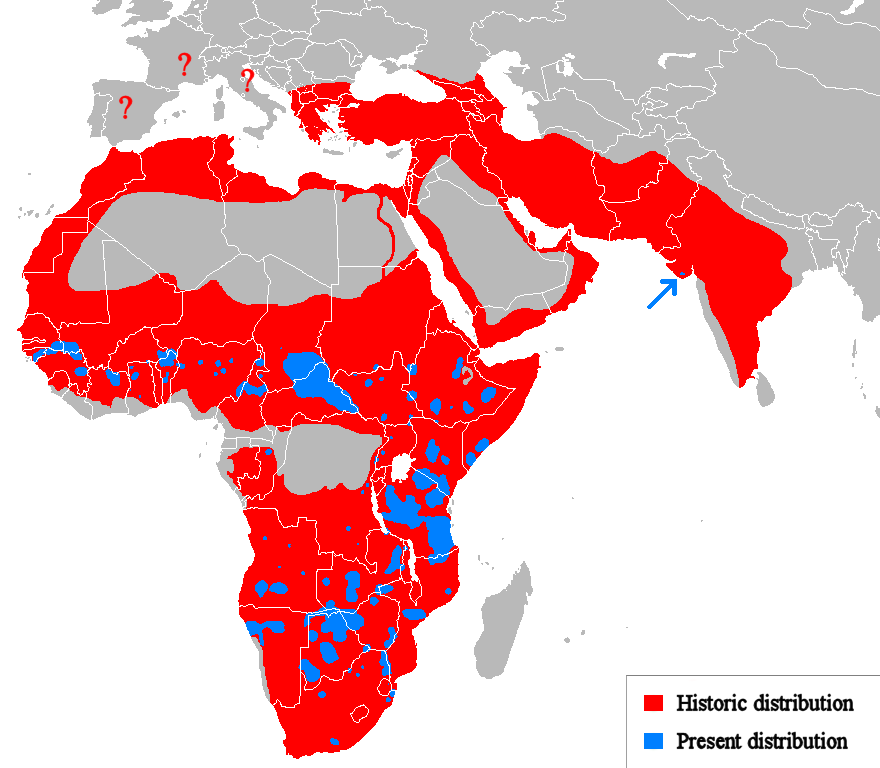Map by Tommyknocker / Wikimedia Commons
If you think lions are quintessentially African animals, you’re only partially right. Look at that map above and prepare to have your mind blown.
Those red areas? That’s where lions used to roam freely. We’re talking about a range that stretched from the tip of southern Africa all the way through North Africa, across the Middle East, and into parts of southern Europe and Asia.
Yes, you read that correctly. Lions once prowled through Greece, Turkey, and even parts of India.
The Range That Once Was
The historic distribution of lions was staggering. These magnificent cats were one of the most widespread large land mammals on Earth, second only to humans.
Ancient Romans weren’t importing lions from some far-flung exotic location for their gladiatorial games. Lions lived practically in their backyard.
The Incredible Shrinking Kingdom
Now look at those small blue patches on the map. That’s what we have left today. The contrast is absolutely devastating.
In just a few thousand years, and particularly in the last century, lion populations have been pushed into isolated pockets, mostly in sub-Saharan Africa. Those blue spots represent the last strongholds of a species that once dominated three continents.
The only Asian lions remaining today survive in the Gir Forest of India, a single population of around 600 individuals. In Africa, lions have vanished from 94% of their historic range. Let that sink in for a moment.
What Happened?
The decline wasn’t mysterious or sudden. Human expansion tells most of the story.
As our civilizations grew, we converted lion habitat into farmland and cities. We hunted their prey species. We killed lions to protect our livestock, our families, and sometimes just for sport or prestige.
In North Africa and the Middle East, lions disappeared relatively early, with the last populations dying out in the 20th century. The Barbary lion of North Africa, the Cape lion of South Africa, and the Persian lion are all gone, lost to history before we even understood what we were losing.
A Glimmer of Hope
Before you close this tab in despair, there’s some good news. Conservation efforts in Africa have stabilized some populations. Protected areas like the Serengeti, Kruger National Park, and the Okavango Delta give lions space to thrive.
These blue patches on the map represent not just survivors, but success stories where humans decided these animals were worth saving.
Why Should We Care?
Beyond the obvious tragedy of losing such an iconic species, lions play a crucial role in their ecosystems. As apex predators, they regulate prey populations and maintain the delicate balance of African savannas. Their presence indicates a healthy, functioning ecosystem.
That map isn’t just showing us where lions used to live. It’s showing us the price of progress and the responsibility that comes with being the dominant species on this planet. The question now is whether those small blue patches will grow or continue to shrink.
Help us out by sharing this map:
